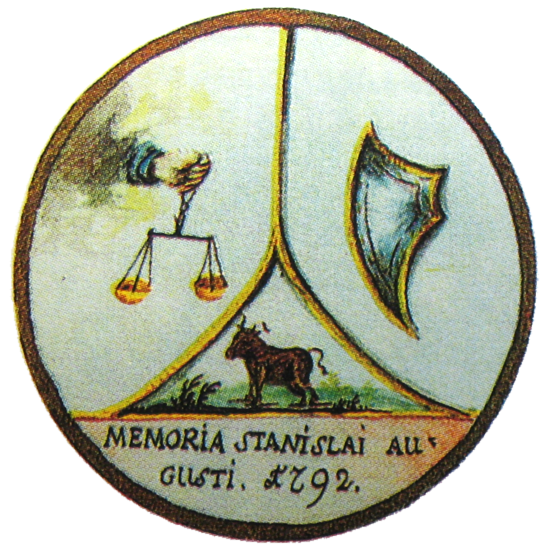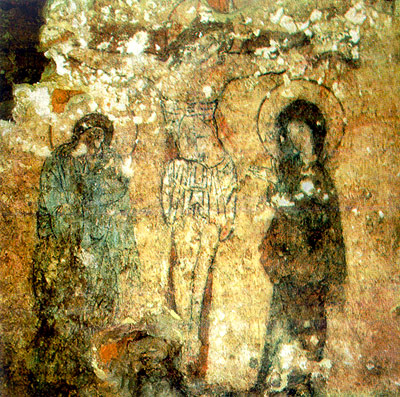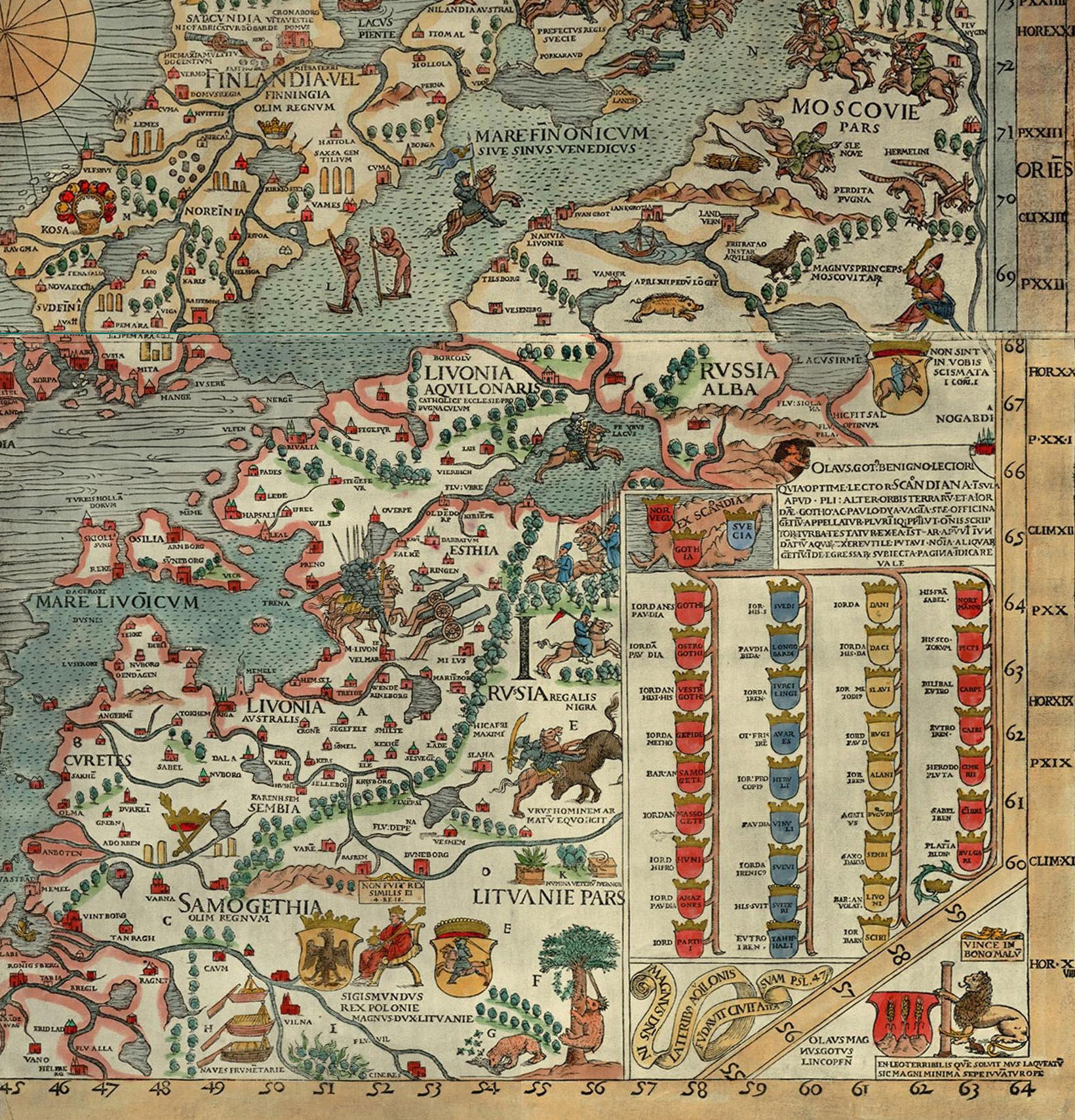|
Jurgis Gedgaudas
Jurgis Gedgaudas (died ) was a noble and diplomat from the Grand Duchy of Lithuania. He used the Leliwa coat of arms. He was active in political life from 1401 to 1435, serving Grand Dukes Vytautas and Švitrigaila as voivode and diplomat. His represented their interest at the Council of Constance and Teutonic Order. He was one of the few nobles who continued to support Švitrigaila after he was deposed. However, after being captured in the Battle of Ashmyany, he switched sides and supported Sigismund Kęstutaitis managing to retain his social status. Political career Gedgaudas was first mentioned in 1401 when he witnessed the Union of Vilnius. At the time he was duke's marshal. Sometime later he became Voivode of Kiev. He lost this position in 1411 to become the elder of Podolia (predecessor of the Voivode of Podolia). King Jogaila sent him and several Polish nobles to Hungary in 1411 and Grand Duke Vytautas sent him to the Council of Constance in 1416. Traveler Guillebert de La ... [...More Info...] [...Related Items...] OR: [Wikipedia] [Google] [Baidu] |
Grand Duchy Of Lithuania
The Grand Duchy of Lithuania was a European state that existed from the 13th century to 1795, when the territory was partitioned among the Russian Empire, the Kingdom of Prussia, and the Habsburg Empire of Austria. The state was founded by Lithuanians, who were at the time a polytheistic nation born from several united Baltic tribes from Aukštaitija. The Grand Duchy expanded to include large portions of the former Kievan Rus' and other neighbouring states, including what is now Lithuania, Belarus and parts of Ukraine, Latvia, Poland, Russia and Moldova. At its greatest extent, in the 15th century, it was the largest state in Europe. It was a multi-ethnic and multiconfessional state, with great diversity in languages, religion, and cultural heritage. The consolidation of the Lithuanian lands began in the late 13th century. Mindaugas, the first ruler of the Grand Duchy, was crowned as Catholic King of Lithuania in 1253. The pagan state was targeted in a religious crusade by ... [...More Info...] [...Related Items...] OR: [Wikipedia] [Google] [Baidu] |
Voivode Of Vilnius
The Voivode of Vilnius ( lt, Vilniaus vaivada, pl, wojewoda wileński) was a high-ranking officer in the Grand Duchy of Lithuania who governed the Vilnius Voivodeship from 1413. He was considered as the most influential member of the Lithuanian Council of Lords. After the Union of Lublin in 1569, the Voivodes of Vilnius (who were senators of the Polish–Lithuanian Commonwealth) were ranked as the fourth highest, while the Castellans of Vilnius were ranked as the sixth highest officers among the Voivodeships of the Polish–Lithuanian Commonwealth. After the Third Partition of the Commonwealth, the Vilnius Voivodeship was annexed by the Russian Empire The Russian Empire was an empire and the final period of the Russian monarchy from 1721 to 1917, ruling across large parts of Eurasia. It succeeded the Tsardom of Russia following the Treaty of Nystad, which ended the Great Northern War. ... and this position was annulled. Elders of Vilnius Voivodes of Vilnius Referen ... [...More Info...] [...Related Items...] OR: [Wikipedia] [Google] [Baidu] |
Hieraniony
Hieraniony ( be, Геранёны) is a village (an agrotown) in Iwye District, Belarus. It is located near the Belarus–Lithuania border. It is known for the 16th-century Hieraniony Castle built by Albertas Goštautas Albertas Goštautas ( la, Albertus Gastold, links=no, pl, Olbracht Gasztołd, links=no, Belarusian/Ukrainian: ''Альберт Гаштольд'') ( – 1539) was a Lithuanian noble of the Goštautai family from ethnic Lithuanian lands of the Gr .... The village's population was 306 residents in 1792, 316 in 1905, 397 in 1970, and 1,278 in 2010. References {{reflist Agrotowns in Belarus Populated places in Grodno Region Iwye District ... [...More Info...] [...Related Items...] OR: [Wikipedia] [Google] [Baidu] |
Die Littauischen Wegeberichte
''Die Littauischen Wegeberichte'' (German for ''Lithuanian route report'') is a compilation of 100 routes into the western Grand Duchy of Lithuania prepared by the Teutonic Knights in 1384–1402. The Knights waged the Lithuanian Crusade to convert pagan Lithuanians into Christianity since the 1280s. The crusade was characterized with frequent raids into the enemy territory to loot and pillage. Since Lithuania lacked a developed road network, local Lithuanian and Prussian scouts would describe and document the best and most effective routes for the military raids into Lithuania. The reports contained brief directions using both natural (rivers, lakes, swamps, forests) and man-made (villages, nobility estates, roads, formerly inhabited places) landmarks for navigation. It also described obstacles and provided locations of good places for rest camps, where to obtain drinking water or fodder for horses. The place names were recorded in old German, therefore some of them are quite dist ... [...More Info...] [...Related Items...] OR: [Wikipedia] [Google] [Baidu] |
Vishnyeva
Vishnyeva ( be, Ві́шнева, Višnieva; russian: Вишнево, ''Vishnevo''; pl, Wiszniew; lt, Vyšniavas; yi, ווישנעווע, ''Vishneve'') is an agrotown in the Valozhyn District of Minsk Region, Belarus, near the border with Lithuania. History The town was probably established in the 14th century. In 1859, it had 72 households, totalling 900 people, of which 500 were Jews. In 1897, it had a population of 2650, including the rural neighbourhood, of which 1463 were Jews. The population of Vishnyeva in 1907 was 2,650, of which 1,863 were Jews. In World War II, the Vishnyeva Ghetto included 1,100 men, women, children and infants, and all were burnt alive by the Nazis and their local collaborators in the Vishnyeva Synagogue on 22 September 1942. Among those killed on that day was the grandfather of Shimon Peres, who later became President of Israel. Some Jews were taken to the ghetto in the nearby town of Valozhyn and killed there. Remains of a Jewish cemetery ca ... [...More Info...] [...Related Items...] OR: [Wikipedia] [Google] [Baidu] |
Ashmyany
Ashmyany ( be, Ашмя́ны; Łacinka: ''Ašmiany''; russian: Ошмя́ны; lt, Ašmena; pl, Oszmiana; yi, אָשמענע, ''Oshmene'') is a town in Grodno Region, Belarus, located at 50 km from Vilnius. The town is Ashmyany District's capital. It lies in Ashmyanka's river basin. The town was the birthplace of the general Lucjan Żeligowski and Jewish Soviet partisan Abba Kovner. Name Since time immemorial, Ašmena and its surroundings were ethnic Lithuanian territory. However, many of the indigenous inhabitants died out during the wars, famine and plague in the late 17th and the early 18th centuries, and the number of Slavic colonists grew. Lithuanians were slavicized along the Minsk-Ašmena-Vilnius axis, and by the mid-19th century, the numbers of Lithuanian-speakers had severely decreased. Presently, its Lithuanian past is sealed in the towns's name, which is of Lithuanian origin. The town's name is derived from the name of the ''Ašmena'' (modern Ashmyanka Riv ... [...More Info...] [...Related Items...] OR: [Wikipedia] [Google] [Baidu] |
Kernavė
Kernavė was a medieval capital of the Grand Duchy of Lithuania and today is a tourist attraction and an archeological site (population 272, 2011). It is located in the Širvintos district municipality located in southeast Lithuania. A Lithuanian state cultural reserve was established in Kernavė in 1989. In 2004 Kernavė Archaeological Site was included into UNESCO world heritage list. Geographic information Kernavė is a small town in the southeastern part of Lithuania, in Širvintos district, located on the right bank of the river Neris, on the upper Neris terrace. It is distance from Širvintos and from Vilnius. It is close to the Vilnius-Kaunas () and Vilnius-Panevėžys () highways. It is possible to travel to Kernavė from Vilnius by the Neris River. Alternate names Its alternate names include Kernavos, Kernovo, Kiernowo, Kiernów (Polish), and Kernuvke (Yiddish). History The area of Kernavė was sparsely inhabited at the end of the Paleolithic era, with the number o ... [...More Info...] [...Related Items...] OR: [Wikipedia] [Google] [Baidu] |
Patronymic Name
A patronymic, or patronym, is a component of a personal name based on the given name of one's father, grandfather (avonymic), or an earlier male ancestor. Patronymics are still in use, including mandatory use, in many countries worldwide, although their use has largely been replaced by or transformed into patronymic surnames. Examples of such transformations include common English surnames such as Johnson (son of John). Origins of terms The usual noun and adjective in English is ''patronymic'', but as a noun this exists in free variation alongside ''patronym''. The first part of the word ''patronym'' comes from Greek πατήρ ''patēr'' "father" (GEN πατρός ''patros'' whence the combining form πατρο- ''patro''-); the second part comes from Greek ὄνυμα ''onyma'', a variant form of ὄνομα ''onoma'' "name". In the form ''patronymic'', this stands with the addition of the suffix -ικός (''-ikos''), which was originally used to form adjectives with the s ... [...More Info...] [...Related Items...] OR: [Wikipedia] [Google] [Baidu] |
Christianization Of Lithuania
The Christianization of Lithuania ( lt, Lietuvos krikštas) occurred in 1387, initiated by King of Poland and Grand Duke of Lithuania Władysław II Jagiełło and his cousin Vytautas the Great. It signified the official adoption of Christianity by Lithuania, the last pagan country in Europe. This event ended one of the most complicated and lengthiest processes of Christianization in European history. History Early contacts with Eastern Orthodox Christianity Lithuanians' contacts with the Christian religion predated the establishment of the Duchy of Lithuania in the 13th century. The first known record of the name Lithuania (''Litua''), recorded in the Annals of Quedlinburg in 1009, relates to Chalcedonian missionaries led by Bruno of Querfurt, who baptised several rulers of the Yotvingians, a nearby Baltic tribe. However, Lithuanians had more active contacts with the Kievan Rus' and subsequent Eastern Slavic states, which had adopted Eastern Orthodox Christianity follo ... [...More Info...] [...Related Items...] OR: [Wikipedia] [Google] [Baidu] |
Baptismal Name
A Christian name, sometimes referred to as a baptismal name, is a religious personal name given on the occasion of a Christian baptism, though now most often assigned by parents at birth. In English-speaking cultures, a person's Christian name is commonly their first name and is typically the name by which the person is primarily known. Traditionally, a Christian name was given on the occasion of Christian baptism, with the ubiquity of infant baptism in modern and medieval Christendom. In Elizabethan England, as suggested by William Camden, the term ''Christian name'' was not necessarily related to baptism, used merely in the sense of "given name": Christian names were imposed for the distinction of persons, surnames for the difference of families. In more modern times, the terms have been used interchangeably with ''given name'', ''first name'' and ''forename'' in traditionally Christian countries, and are still common in day-to-day use. Strictly speaking, the Christian name ... [...More Info...] [...Related Items...] OR: [Wikipedia] [Google] [Baidu] |
Lithuanian Mythology
Lithuanian mythology ( lt, Lietuvių mitologija) is the mythology of Lithuanian polytheism, the religion of pre-Christian Lithuanians. Like other Indo-Europeans, ancient Lithuanians maintained a polytheistic mythology and religious structure. In pre-Christian Lithuania, mythology was a part of polytheistic religion; after Christianisation mythology survived mostly in folklore, customs and festive rituals. Lithuanian mythology is very close to the mythology of other Baltic nations – Prussians, Latvians, and is considered a part of Baltic mythology. Sources and evidence Early Lithuanian religion and customs were based on oral tradition. Therefore, the very first records about Lithuanian mythology and beliefs were made by travellers, Christian missionaries, chronicle writers and historians. Original Lithuanian oral tradition partially survived in national ritual and festive songs and legends which started to be written down in the 18th century. The first bits about Baltic ... [...More Info...] [...Related Items...] OR: [Wikipedia] [Google] [Baidu] |
Mir, Belarus
Mir ( be, Мір; russian: Мир; ) is a town in the Karelichy District (Карэліцкі раён) of Grodno Region, Belarus on the banks of Miranka River, about 85 kilometers southwest of the national capital, Minsk. History Mir village was founded sometime prior to 1345. It is home to Mir Castle Complex, a late medieval castle, which made the town the target of many attacks over the centuries. The town belonged to the Illinič family (Korczak coat of arms) first and then to the Radziwiłł family. It was destroyed by the Swedish forces in 1655 (Deluge (history), Deluge) and again by the Swedes during the Great Northern War in 1706. In 1792, the Lithuanian division of the Polish–Lithuanian Commonwealth army under Józef Judycki was routed by the invading Imperial Russian army corps under Boris Mellin (see Battle of Mir (1792), Battle of Mir). During the Napoleonic invasion of Russia in 1812, Russian Imperial cavalry, artillery and cossack regiments ambushed and defeated the ... [...More Info...] [...Related Items...] OR: [Wikipedia] [Google] [Baidu] |






